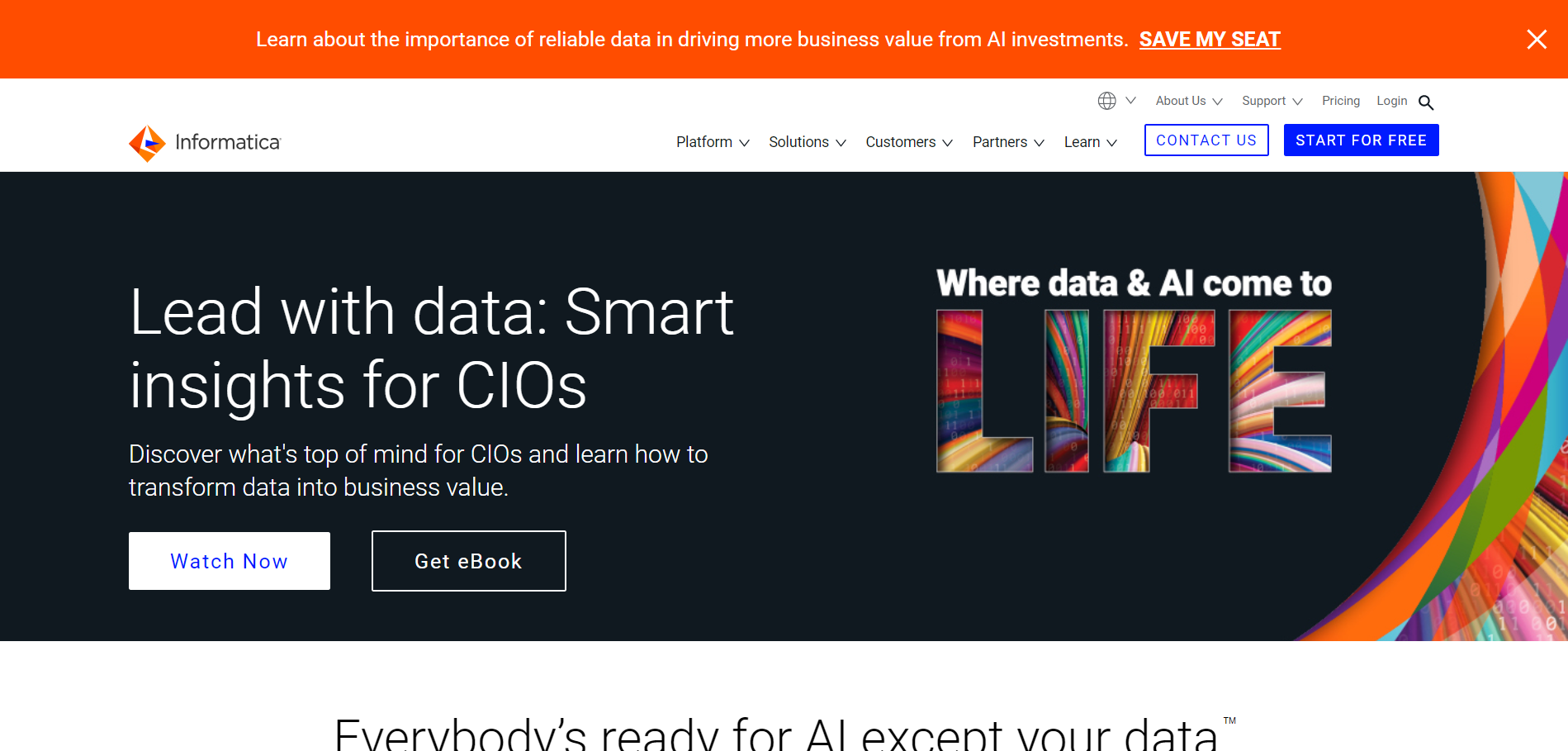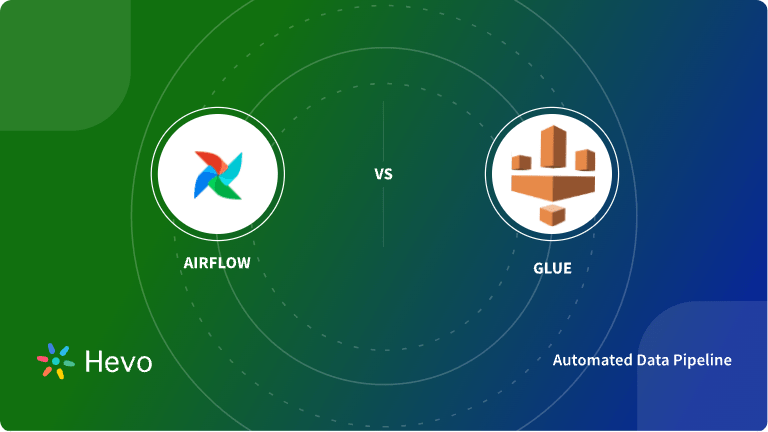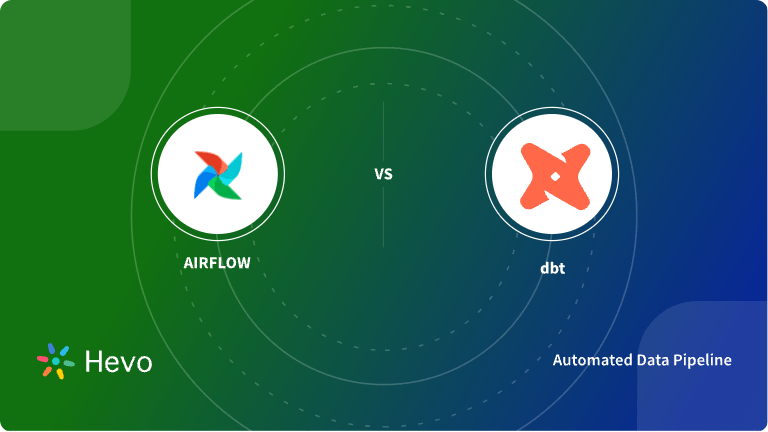Businesses today rely heavily on efficient data integration and ETL (Extract, Transform, Load) tools to manage and analyze their data. Choosing the right tool can significantly impact an organization’s ability to process and utilize data effectively. AWS Glue and Informatica are prominent players offering unique features and benefits. In this blog, AWS Glue vs Informatica we will highlight their strengths, limitations, and the scenarios in which each tool excels.
Table of Contents
Overview of AWS Glue

G2 Rating: 4.2(189)
Capterra Rating: 4.1(10)
AWS Glue is a fully managed ETL service that Amazon Web Services (AWS) provides. It automates many of the steps involved in data integration and is designed to simplify the process of preparing and loading data for analytics.
Key Features of AWS Glue
- Serverless Architecture: AWS Glue is serverless, meaning that users do not need to manage or provision any infrastructure. AWS handles all the underlying resources, allowing users to focus on their data tasks.
- Automatic Schema Discovery: AWS Glue can automatically discover and catalog the schema of datasets stored in S3, Redshift, and other AWS services, making it easier to manage and process data.
- Integrated with AWS Services: AWS Glue seamlessly integrates with other AWS services like S3, Redshift, and Lambda, providing a cohesive ecosystem for data management.
- Cost-Effectiveness: With a pay-as-you-go pricing model, AWS Glue is an affordable option for AWS users, especially those already utilizing other AWS services.
Use Cases of AWS Glue
- ETL Operations for Data Lakes: AWS Glue is ideal for building and managing data lakes. It simplifies extracting data from various sources, transforming it to fit the desired schema, and loading it into a data lake. Organizations can leverage AWS Glue to automate ETL workflows, making managing large volumes of structured and unstructured data easier.
- Data Preparation for Machine Learning: AWS Glue can be used to prepare and cleanse data for machine learning models. Automating data transformations ensures data is ready for analysis and training, which is essential for accurate machine-learning outcomes. It can easily integrate with Amazon SageMaker or other machine learning services within the AWS ecosystem.
- Data Migration to AWS Services: AWS Glue also migrates data from on-premise or cloud environments to AWS. It supports various data sources and formats, enabling organizations to efficiently move their data into AWS databases, data warehouses, or data lakes.
Overview of Informatica

G2 Rating: 4.3(519)
Capterra Rating: 4.3(14)
Informatica is a leading enterprise data integration platform that offers a wide range of tools and services for data management, including ETL, data quality, data governance, and master data management. It is known for its scalability and robust features.
Key Features of Informatica
- AI-Powered Data Management: Informatica leverages AI to automate data management tasks, enhance data quality, and improve decision-making processes.
- Support for On-Premise and Cloud Environments: Informatica offers flexible deployment options that support on-premise, cloud, and hybrid environments.
- Comprehensive Data Governance: Informatica provides extensive features, ensuring data security, compliance, and accurate data lineage.
- Scalability and Performance: Informatica is built to handle large-scale data operations, making it suitable for enterprises with high data volumes.
Use Cases of Informatica
- Complex ETL Processes in Large Enterprises: Informatica is often chosen by large enterprises that need to manage complex ETL processes across various data sources and platforms. Its powerful data integration tools allow for the transformation and movement of large volumes of data, ensuring that all data is accurate, consistent, and accessible.
- Data Governance and Compliance Management: Informatica’s robust data governance capabilities make it ideal for organizations that must comply with industry regulations and internal policies. It provides detailed data lineage, metadata management, and audit trails, helping organizations maintain data integrity and meet compliance requirements.
- Cross-Platform Data Integration: Informatica excels in environments where data must be integrated across multiple platforms, including on-premise systems, cloud applications, and hybrid environments. Its extensive library of connectors and pre-built integrations allow for seamless data movement and synchronization between disparate systems, ensuring that data is available where and when needed.
Feature Comparison: Informatica vs AWS Glue
| Feature | AWS Glue | Informatica |
| Focus | Data Ingestion, ETL, ELT | Data Ingestion, ETL, ELT |
| Pricing | AWS Glue’s pricing is based on the resources consumed and the duration of ETL jobs, offering more predictable and often lower costs for serverless operations. | Cosumption-based pricing with a 30-day free trial only using work email. |
| Ease of Use | AWS Glue simplifies the ETL process with a user-friendly setup designed for ease of use. | Varies from low-code to high-code, depending on the product. |
| API Access | Offers REST API, CLI tools, and SDKs | Offers REST API, Connector Toolkit, and Informatica Developer Tool for advanced integrations. |
| Support | Comprehensive support options, including documentation and customer support, depending on the pricing plan | Comprehensive support options, including documentation and customer support. It depends on your pricing plan. |
| Security Certifications | SOC 1, SOC 2, SOC 3, HIPAA, GDPR, Privacy Shield | SOC 1, SOC 2, SOC 3, HIPAA, GDPR, Privacy Shield. |
| Customizability of Connectors | High customizability through custom connectors and scripts | High customizability through the Connector Toolkit and REST API connectors. |
| Vendor Lock-In | Yes | Yes |
| AI Capabilities | Yes | Yes, CLAIRE AI model. |
| Python Support | Yes | Yes |
If you are looking for an Informatica alternative, you can also check out our blogs on Hevo vs Informatica and Informatica vs Matillion.
Detailed Comparison: Informatica vs AWS Glue
Architecture
- AWS Glue
- Serverless Environment: AWS Glue operates in a serverless environment, which means users do not need to manage or provision infrastructure. AWS Glue automatically handles resource provisioning and scaling based on workload demands.
- Data Catalog: AWS Glue includes a data catalog that automatically manages metadata, making it accessible to ETL processes. It simplifies data discovery and integration across various sources.
- ETL Jobs: Glue jobs run on a managed environment with automatic scaling. Users can define jobs using Glue’s built-in transformations or custom scripts in Python or Scala.
- Crawler: AWS Glue Crawlers automatically scan data sources, infer a schema, and populate the Data Catalog, reducing the manual effort required to manage metadata.
- Informatica
- Flexible Deployment: Informatica offers a range of deployment options, including cloud, on-premise, and hybrid environments. This flexibility allows businesses to choose the deployment model that best fits their needs.
- Integration Hub: Informatica’s architecture includes a central integration hub that manages data integration processes. This hub connects various data sources and targets, facilitating data movement and transformation.
- Data Quality and Governance: Informatica includes comprehensive data quality and governance features, ensuring data integrity, security, and compliance across all integration tasks.
- Metadata Management: Informatica provides robust metadata management capabilities, allowing users to track data lineage, manage metadata, and ensure data consistency.
Ease of Use
- AWS Glue
- Simplified Setup: AWS Glue offers a simplified setup process, particularly for users familiar with AWS. It provides built-in features and wizards that streamline the creation and management of ETL jobs.
- Visual Tools: Glue Studio provides a drag-and-drop interface for creating ETL jobs, making it more accessible for users without extensive technical backgrounds.
- Integration with AWS Services: Glue’s integration with other AWS services, such as S3 and Redshift, simplifies data workflows within the AWS ecosystem.
- Informatica
- Comprehensive Interface: Informatica offers a feature-rich interface that supports complex data integration tasks. While it provides extensive capabilities, the interface can be complex for new users.
- Advanced Customization: Informatica allows for high levels of customization and flexibility in data integration processes. This can be beneficial for advanced use cases but may require significant expertise.
- User Training: Informatica often requires additional training and support for users to fully utilize its advanced features and capabilities.
Scalability
- AWS Glue
- Automatic Scaling: AWS Glue automatically adjusts resources based on the volume and complexity of ETL jobs, providing seamless scalability without manual intervention.
- Serverless Design: AWS Glue’s serverless architecture allows it to handle varying workloads efficiently, making it suitable for both small—and large-scale data operations.
- Informatica
- Scalable Architecture: Informatica is designed to handle large-scale data operations and offers scalability options for high-performance needs. It supports horizontal scaling and performance tuning to manage large volumes of data.
- Flexible Deployment: The ability to deploy Informatica on-premises, in the cloud, or a hybrid environment allows organizations to scale based on their specific requirements and infrastructure.
If you’re looking for Glue alternatives, take a look at Fivetran vs AWS Glue and AWS Glue vs Matillion.
Cost
- AWS Glue
- Pay-As-You-Go: AWS Glue follows a pay-as-you-go pricing model, where costs are based on Data Processing Unit (DPU) hours, data catalog storage, and data crawlers. This can be cost-effective for users who need to scale resources dynamically.
- Free Tier: AWS Glue offers a free tier with limited resources, which can be useful for evaluating the service or for small-scale projects.
- Serverless Savings: Glue’s serverless nature can lead to cost savings by reducing the need for manual infrastructure management and optimizing resource usage.
- Informatica
- Licensing-Based Pricing: Informatica generally operates on a licensing-based pricing model, which can be more expensive upfront but provides access to a broad set of advanced features and enterprise-level support.
- Cost Management: Informatica’s costs can vary based on deployment (cloud or on-premise) and usage. Investment in Informatica’s comprehensive capabilities can be justified for large enterprises with complex integration needs.
- Additional Costs: Additional costs may include infrastructure (for on-premise deployments), maintenance, and support.
Hevo stands out as a more efficient and flexible solution for data integration compared to AWS Glue and Informatica:
- Ease of Use: Hevo’s no-code platform simplifies data integration, making it more user-friendly than AWS Glue’s technical setup and Informatica’s complex interface.
- Rapid Deployment: Hevo offers faster deployment, allowing your team to establish data pipelines quickly, whereas AWS Glue and Informatica may require more time due to their intricate configurations and customizations.
- Transparent Pricing: Hevo provides straightforward, competitive pricing, contrasting AWS Glue’s pay-as-you-go model and Informatica’s often high and variable costs.
Limitations
AWS Glue and Informatica offer potent data integration capabilities, but each has limitations that can impact their effectiveness depending on the use case. Understanding these limitations is crucial for deciding which tool best suits your organization’s needs.
Limitation of AWS Glue
- Limited Pre-Built Transformations: AWS Glue provides built-in ETL transformations that might only cover some complex or specific transformation needs. Users with highly specialized requirements may find the built-in options lacking.
- Custom Code Integration: While Glue supports custom code in Python and Scala, integrating and managing complex transformations can be more cumbersome than platforms with more flexible programming environments.
- Variable Costs: AWS Glue operates on a pay-as-you-go model, which can lead to high costs if data volumes are large or ETL jobs are frequent. Users must monitor and optimize job configurations to manage expenses effectively and closely.
Limitations of Informatica
- Complexity and Learning Curve: Informatica’s comprehensive feature set can be complex and overwhelming for new users. The breadth of its tools often results in a steeper learning curve and increased setup time.
- Higher Costs: Informatica typically employs a licensing-based pricing model that is more expensive than consumption-based models. This can be a significant consideration for smaller organizations or those with limited budgets.
- Maintenance Overhead: Managing Informatica, especially in on-premise or hybrid environments, involves substantial maintenance tasks, including updates, performance tuning, and troubleshooting, which can be resource-intensive.
Why Choose Hevo over Glue and Informatica?
Hevo is a no-code data integration platform that simplifies connecting and syncing data across multiple sources in real time. With its intuitive interface, Hevo allows users to set up and manage data pipelines without requiring extensive technical expertise.
- No-Code Platform: Hevo’s intuitive, no-code interface allows users to set up and manage data pipelines without extensive technical expertise, simplifying the process compared to AWS Glue and Informatica.
- Quick Deployment: Hevo’s streamlined setup process reduces the time to value, allowing your team to deploy data integration solutions faster and focus on strategic tasks.
- Real-Time Data Processing: Unlike AWS Glue and Informatica, Hevo provides real-time data processing with low latency, ensuring up-to-date data availability for critical applications.
- Cost-Effective Pricing: Hevo offers transparent pricing with clear cost structures, potentially reducing the complexity and costs associated with infrastructure management and data integration.
You can also read more about:
Conclusion
When selecting a data integration tool, factors such as architecture, ease of use, scalability, and cost must be considered. AWS Glue and Informatica are both powerful tools with distinct advantages, but they also have limitations that may impact their suitability for different use cases.
Hevo stands out as a robust alternative that addresses many of the challenges associated with AWS Glue and Informatica. With its no-code platform, real-time data processing, and cost-effective pricing, Hevo simplifies data integration while providing the flexibility and performance needed for modern data workflows. For organizations seeking an efficient and user-friendly solution, Hevo offers a compelling choice that can grow with your business.
FAQ on AWS Glue vs Informatica
1. Is AWS Glue an ETL tool?
AWS Glue is an ETL (Extract, Transform, Load) tool. It is a fully managed service provided by Amazon Web Services (AWS) that simplifies the process of preparing and loading data for analytics.
2. What is better than AWS Glue?
Hevo Data: A no-code data integration platform that simplifies the setup and management of data pipelines with real-time processing and a more user-friendly interface compared to AWS Glue.
3. Is AWS Glue difficult?
Learning Curve: For users new to AWS or ETL processes, understanding how to set up and optimize Glue jobs can be challenging, especially when dealing with complex transformations or large datasets.
Customization: While AWS Glue provides built-in transformations, advanced users may need to write custom code in Python or Scala, which can increase the complexity.









